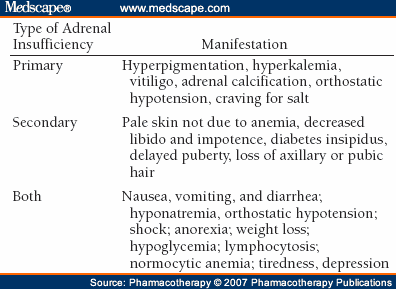Chastain Study Guide Endocrine
Treatment of myxedema coma: passive rewarming, vasopressors, steroids, T4 (4mcg/kg) for thyroid replacement. Treat hypoglycemia. Restrict fluids because these patients are usually hyponatremic.
T4 is relatively inactive and gets converted to T3 in the body. T4 is the most commonly used drug for myxedema coma. T3 should only be considered in severe myxedema coma. T3 should be used with caution in the elderly due to it’s potential marked effects. Michelle has seen STEMI secondary to T3. Harwood comment: Why would you ever use T3? Michelle response: In severe myxedema, it may take a long time for the body to convert T4 to T3. Still avoid its use in the elderly.
When treating thyrotoxicosis, lithium can be used as a substitution for iodine in patients who say they are allergic to iodine.
Elise comment: no one is allergic to iodine. It is a part of your body metabolism. Also shellfish allergy does not mean you will be allergic to CT contrast. It only means you have a slightly higher than normal propensity for an allergic reaction to any drug.
When treating DKA in pediatric patients, don’t use an insulin bolus. Be cautious with IV fluids and keep any bolus to no more than 10ml/kg. Don’t give bicarbonate unless ph is <6.9 and patient is not responding to insulin/IV fluid.
Stress dose steroids for kids is 1-2mg/kg of hydrocortisone.
Michelle and Elise discussed treatment of hypoglycemia in kids. It was agreed that the easiest decision rule was Bill Schroeder’s Rule of 50.
Age less than one month: 5ml/kg of D10 (5 x 10=50)
Age one month to 2 yrs: 2 ml/kg of D25 (2 X 25=50)
Age over 2 years: 1 ml/kg of D50 (1 X 50= 50)
Adrenal insufficiency: Primary adrenal insufficiency means the adrenal gland is not functioning and patients will have hyperkalemia/hypokalemia. Secondary means there is a problem with the pituitary gland.
*Primary vs Secondary Adrenal Insufficiency

*Diagnostic criteria for Hyperosmolar coma
Harwood comment: In severe hyperosmolar coma , you can sometimes get a lactic acidosis that will alter the gap and ph from the strict criteria listed. But it is still hyperosmolar coma and not DKA.
Management of Thyroid Storm: Propranolol, PTU, Iodine, Hydrocortisone
Consider the mnemonic: PPISS P=propranolol, P=PTU, I=Iodine, SS=Stress dose Steroids
Joint EM-Peds Conference Bronchiolitis
New Guidelines published in Pediatrics
Clinicians should not administer albuterol to infants/children with bronchiolitis
Clinicians should not administer epinephrine to infants/children with bronchiolitis
Clinicians should not administer hypertonic saline to infants/children with bronchiolitis in the ED. Hypertonic can be used occasionally for inpatients as it has been shown to reduce length of stay slightly.
Clinicians should not administer systemic steroids to infants/children with bronchiolitis.
Clinicians may choose not to administer supplemental oxygen if O2 sat exceeds 90%. Also continuous pulse ox may not be used in infants and children with bronchiolitis. It is a poor predictor of respiratory distress and can prolong hospital stay. Spot pulse oximetry checks are preferred.
Chest physiotherapy should also not be used. Deep suctioning may prolong length of stay and should also be avoided. Obviously, no antibiotics should be administered for bronchiolitis.
IV fluids can be administered in infants and children who have poor PO intake due to bronchiolitis.
No routine need for viral testing or chest xray. Dr. Collins states getting a CXR is reasonable in a child with illness more than one week.
Synagis is a monoclonal antibody that can boost the immune system.
Synagis can be used in infants with bronchiolitis who have cardiac disease or chronic lung disease. It also can be used in premies born before 29weeks.
Audience comment: PCR for RSV can help the clinician rule out a bacterial illness if it is a positive. Dr. Collins agreed that it is still ok to order PCR’s in atypical cases.
Beta agonists not indicated unless the patient has had multiple prior wheezing episodes and has a parental history of asthma. Patients with these characteristics can receive a trial dose of beta agonists. If they improve, they can get repeated beta agonist therapy.
We will continue to use upper airway suctioning here at ACMC. No deep suctioning.
For hydration, IV or NG hydration is acceptable.
The ACMC experience on the floors showed that PCR testing had no benefit.
Elise comment: In the really sick kids what should we do? Ahkter response: Heliox, and high flow nasal cannula o2.
Negro/Kerwin Oral Boards
Case 1. 51yo male with vomiting/diarrhea, weakness. Patient also has crampy abdominal pain. Vital signs show tachycardia. Physical exam reveals ptosis. History reveals that patient ate home-canned peppers. Diagnosis: Botulism. Treatment: botulinum anti-toxin, supportive therapy.

*ptosis with botulism
Case2. 27 yo male with altered mental status. Vital signs unremarkable. On exam, patient has jaundice. Further history revealed that patient was eating muschrooms while camping on the west coast. Diagnosis was amanita phalloides mushroom poisoning. Patients suffering from this toxicity have late onset vomiting (more than 6 hours after ingestion). They can also have liver failure. Treatment is supportive, manage hypoglycemia, and transfer for liver transplant. NAC usage has not been shown to be definitely helpful.
*Amanita phalloides mushroom
Case3. 52yo male with vomiting, diarrhea, and weakness. Vital signs show hypotension and tachycardia. Exam shows abdominal tenderness. Patient had severe abdominal pain and voluminous stool . Diagnosis was salmonella poisoning. Treatment: send stool cultures, fecal leukocytes may suggest a bacterial cause of diarrhea, antibiotics are indicated for severe symptoms/age over 50/immunocompromise.
Heilicser Lessons from Katrina and Haiti Response Efforts
Excellent discussion of the difficulties faced by healthcare workers in these disaster settings.
When you are a responder in a disaster, be sure you get dedicated rest time. IMERT has a rule of 12 hours on and 12 hours off. If you don’t get rest away from the site you will be come ineffective.
Harwood question: What are the documentation requirements in a disaster? Response: Basic patient identifying info and pertinent positives were only documented. The document stayed with the patient.
Doctors without Borders is the Gold Standard of Physician Disaster Response Organizations.
You have to prepare yourself psychologically before going to a site like post-earthquake Haiti. Whatever you expect you will face, it will actually be worse than expected when you get there. It can be an emotional experience.
You face many ethical quandaries in situations like Haiti. Who do you resuscitate? If you resuscitate them how do you continue critical care? Should you do surgery if you don’t have antibiotics to treat the patient after surgery? Can you give 10 units of blood to save a single patient when you have other patients who need the blood as well?
In Haiti, placebo medicine with words of encouragement was valid treatment.


